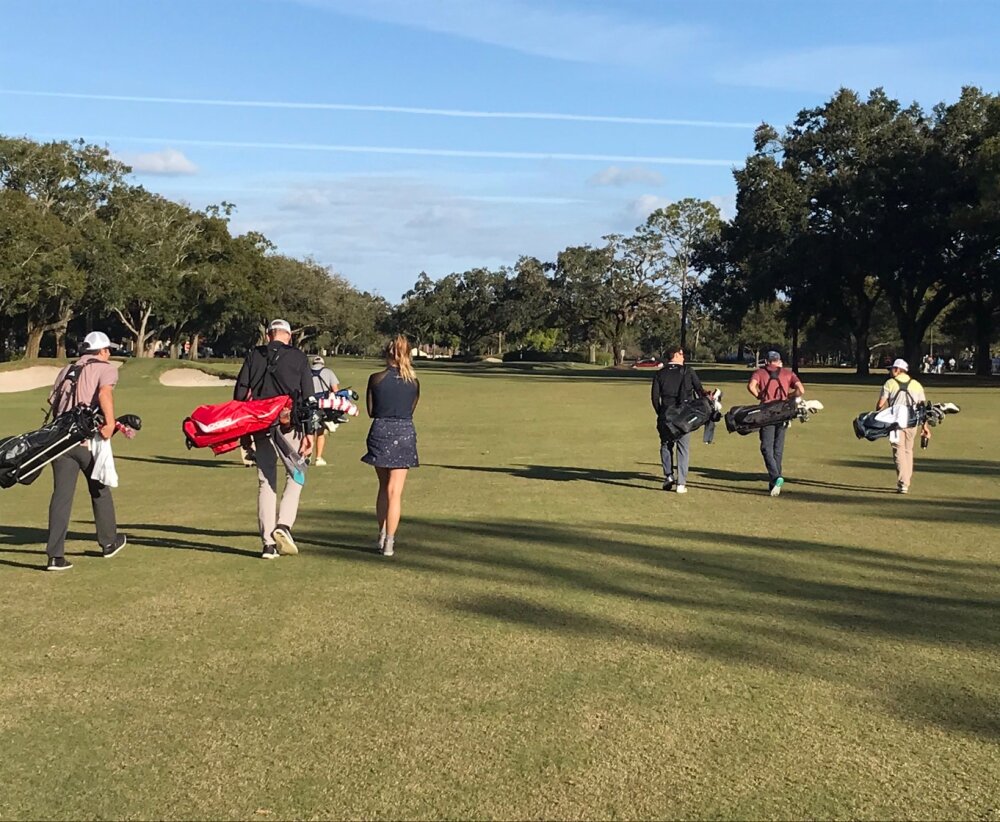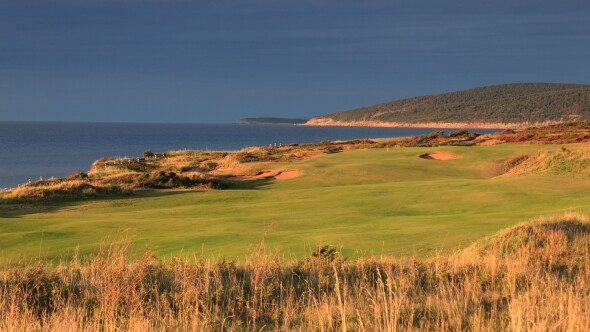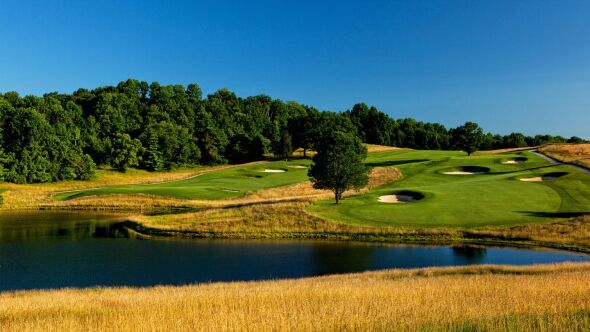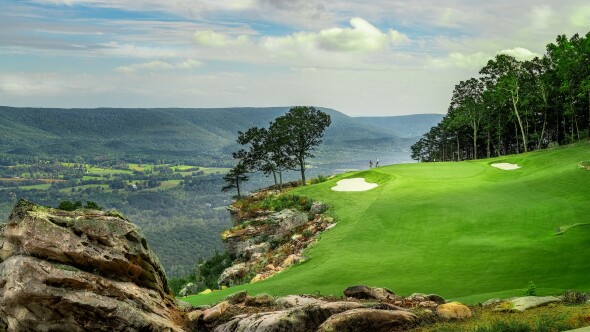In an age of 320-yard drives, launch monitors, hand-held GPS devices and anguish about declining player participation, whoever thought that a nine-hole municipal golf course shoe-horned into a tree-lined residential area and only 2,480 yards long could point the way to the game’s healthy future?
That’s one of many takeaways from a week spent at the PGA Merchandise Show at Orlando’ Florida’s Orange County Convention Center. This is my 27th such gathering in a row, the 66th overall for the industry. It’s the kind of place where you learn to bring comfortable shoes and plenty of business cards because you’ll spend hours prowling what add up to 10 miles of aisles. That's what it takes to wend through nearly 1,000 trade exhibits and spread under one roof covering 20 acres of the industry. These merchandisers run the gamut from Titleist, Callaway, Bushnell and Club Car to ECCO shoes, Donald Ross Sportswear, Under Armour and JBA Awards (golf accessories), as well as dozens of inventive little gadgets and a slew of cannabidiol purveyors like Mulligan CBD, LLC.
Along the way you’ll stumble onto dozens if not hundreds of people you know – or whose names you have forgotten, in which case those seemingly antiquated business cards suddenly became useful again. The key is to put down your cellphone for a while and just take it all in.
Newcomers are overwhelmed at first. Five hours later they’ve left exhausted and stunned, as well, at the scope of the industry.
Besides all the alluring gear there’s also a serious conversation running through the place regarding the state of the game. And each year, as I take the pulse of industry leaders and insider analysts and consultants, I come away convinced that there’s no such thing as a unified picture of the industry. It’s something I’ve learned from decades of hanging around golf courses, including the entire range of facilities – from elite private clubs resorts to mom-and-pop daily fees and municipal facilities. There’s no single model of golf that works for all.
Appropriate, too, for a sport whose ball field is the least specified of all. The only rule governing what constitutes a golf course is that the hole you’re playing to is four and one-quarter inches in diameter. Everything else varies according to local conditions – length, width, playing texture, elevation, topography, and target audience.
Of course there are a few principles of analysis that help. Think of supply, demand and capacity. That should be the starting point for anyone interested in a sober, realistic analysis as opposed to glassy-eyed cheerleading and wishful thinking. For sixteen years now, industry analysts Jim Koppenhaver of Pellucid Corp. and Stuart Lindsay of Edgehill Golf Advisors have collaborated on a data-packed geek fest that crams three hours of overly complicated PowerPoint slides into 75 minutes of non-stop lecturing. Among the many lessons learned is that there are too many golf courses chasing too few clients. Or, to rephrase it quantitatively, the nation’s golf course supply in 2018 could accommodate 788 million rounds but only booked 427 million, for a utilization rate of 54 percent. The average U.S. golf course, measured in terms of 18-hole equivalents (to adjust for the 25 percent of facilities that are nine-hole layouts) registered about 31,000 rounds, down from a peak nearly two decades ago of 37,000. In other words, it’s easier than ever to get a tee time. That's great for consumers but not so good for course operators.
By every metric – number of golfers, percentage of the population that plays, average rounds at courses – we’re seeing marginally less golf each year in the U.S. Not that the game is going away. But it is going through a steady slide of about 1-2 percent annually. A number of obvious factors conspire – cost of play, difficulty of the game, the hours required. But there’s a deeper worry than these aspects of play. It has to do with the cultural fit of the game in modern society.
If you were to design a game that was out of whack with where contemporary culture is headed, it would look exactly like golf – taking up lots of time and land, with a reward structure that is notoriously unreliable. It’s not the kind of stuff that appeals to youth. There are endless consumer studies of Millennials and Gen-Xers attesting to this. Add to the mix the virtual disappearance of caddie yards as an entry portal to the game, plus the tendency of aging baby boomers who play extensively until they reach their mid-70 , and you have a formula for concern.

Which brings to that little nine-hole golf course we started the week with, the Winter Park Nine. There on Tuesday, about 100 folks gathered for a celebration of the game, organized under the auspices of Seamus Golf, an Oregon-based brand specializing in boutique head covers, ball markers and putter covers. The gathering included representatives from new media outlets, including podcasters and anyone who appreciates simple, old-fashioned golf. Folks formed eightsomes and 10-somes and played a makeshift alternate shot event that perfectly showcased the layout's charms. Architects Keith Rebb and Riley Johns, who rebuilt the Winter Park Nine two years ago, were on hand to talk about the community park atmosphere of the place. Our host was our very own Matt Ginella, who is a town resident and an effusive advocate of all that the golf course entails.
It’s a treasure of a municipal layout that books 37,00 rounds annually, with greens fees set at $15 for town residents and $21 for those from outside Winter Park.
Simple golf, engaging greens, an intimate relationship with the neighborhood and a place for dogs, prams, power walkers and anyone looking to hang out. The 'WP9' is as simple and as pleasant as golf can get.
A model for the future? Well, at the very least, one of many plausible possibilities.












I attended the PGA show for about the 10th time. THE SHOW IS THE SAME OLD WITH A NEW WRAPPER. IT HAS THE SAME OLD FUDDY DUDDIES RUNNING THE SHOW, NO NEW BLOOD TO CATAPULT THIS DYING SPORT TO A NEW LEVEL. (HOPEFULLY, SUSAN WHALEY CAN BRING IN FRESH IDEAS). ONE HAS SUGGESTED THAT A HYBRID BETWEEN TOP GOLF AND THE TRADITIONAL GOLF COURSE IS THE ANSWER! THE PROBLEM LIES IS THAT YOU CANT JUST PICK UP A GOLF CLUB AND GO TO THE COURSE AND HAVE FUN. ANOTHER STRUCKING FEATURE OF THE PGA SHOW, IS THAT IT IS MADE UP OF A MAJORITY OF CAUCASIAN MALES FROM THE PGA PROFESSIONALS TO THE VENDORS.
LASTLY, ANOTHER STRIKING FEATURE OF THE SHOW IS THE PARTICIPATION "GOLF INSTAGRAM SENSATIONS" THESE GIRLS WALKING AROUND HALF DRESSED WITH THEIR BREASTS HANGING OUT. THESE WOMEN HAVE 250K TO 1 MILLION FOLLOWERS COMPARED TO LPGA PLAYERS WHO HAVE 20K FOLLOWERS. THE INDUSTRY VENDORS WERE USING THESE INSTRAGRAM SENSATIONS RATHER THAN LPGA PLAYERS. YES THERE WAS LEXI WITH A SHORT LINE BROOKE HENDERSON HAD 5 PEOPLE TALKING TO HER BUT THE TALK WAS ALL ABOUT THE INSTAGRAM SENSATION I THINK A BLOW TO THE LPGA. POOR TASTE AT THE SHOW.
Whaaattt? Matt Ginella supporting an affordable round of golf for the average player? He must be getting comped rounds or writing them off on his expense report. He and Joe Passov are two reasons why people have such a skewed view of the game. The only places that they ever give top reviews to are all priced well over $100.00 dollars per round, and of course MUST include a full staff of people unloading your clubs, cleaning your clubs, taking your clubs back to the car while you feast on lobster and filet while paying upwards of $60.00 per ounce for single-malt scotch. All while they NEVER actually PAY out-of-pocket (again, comped rounds, or expense report reimbursement). And if your course wasn't designed by a "Brand-Name" architect, you'll be lucky to get a two-star review (even though there are probably a thousand - 420 yard, downhill, slight dogleg right with a trap at the corner and an approach to an elevated, two-tier green, fronted by a bunker - holes on the planet - the one at your course sucks because it wasn't designed by someone famous and you don't charge $145.00 per round). These two guys (and a few dozen others) literally try to take a dump on your golfing joy, by cheapening your course, and your experience, because you can't just hop a flight to spend a weekend playing "Teeth of the Dog", or "Castle Stuart" whenever the mood strikes. They create an unrealistic premise of what a "Real Golfer" should be expecting every time they tee it up.
Just not a fair or accurate characterization. Matt covers budget golf regularly. Found a handful of value links here: https://www.golfadvisor.com/ginella-on-value-golf
You got that one right. And while we're on the subject of over-inflated golf, what about the rediculous cost of playing AMTOUR events? I'm glad those guys enjoy it. Sounds like a lot of fun. But to advertise as though anyone can join in is a bit presumptuous.
I can understand that the PGA show is closed to the public - after-all, it really is an industry trade show. Unfortunately, the "traveling merchandise shows" in the midwest and northeast that follow in February, have lost their luster. I discovered those "shows" are nothing more than booth after booth of Myrtle Beach golf holiday promotions. No thanks. As for the current and future state of the game, maybe it's a regional thing. I live in the mid-atlantic area, and most good public golf courses are jammed on the weekends - with 5 hour rounds the norm. Again, no thanks, and I sure as heck am not a millenial.
Lastly, while some may disagree, "corporate golf" has also lost its luster -even at private clubs. Sadly, in some industries, the "optics" of being out on a golf course with vendors, customers, or business associates, is frowned upon and in some cases, forbidden. In my dad's time -- from the 60s through the 80s, it was something to be envied or sought after. Again, there are exceptions, but the trend seems to going the other way.
What's new in putter shafts?
Check out STABILITY putter shafts.....real technology
For sure golf, at the moment, is in decline. But the future could be bright. Most sports are learned early and then given up later in life. Golf may well be the opposite. Given that it is not too intimating to the beginner, people may start playing later in life believing they would enjoy time outdoors in a pleasant setting along for many years. The key here is no intimidation. Either by excessive cost to get started or by rules and other players. For example, the push to speed up the game (in a somewhat misguided attempt to attract and retain) can place a lot of unpleasant pressure on the beginner and, thusly, drive them away. One suggestion: if the course is being under utilized, spread apart the tee times.
In our area of Northern Indiana courses are closing right and left - mostly going to housing developments or other uses. Leagues are scrambling to find places to play on late weekday afternoons, but it is still easy to get weekend tee times. While it helps the surviving courses, it is no panacea. One owner told me that the year after a nearby course closed, his business was still down just a bit. The industry needs more players, but then everybody knows this.
Would be nice if we could see the merchandise at the show. VISUAL work!
This isn’t the last PGA Show story we write. Stay tuned
From this article and some of the segments I watched on the Golf Channel, this show seems really interesting to the average golfer like me who likes to learn about "what's new" in the golf industry. But I have to say, it's sort of offensive that on some level this show is not open to the general public. I know logistically and for many other reasons this would be difficult but it would be nice if the average consumer of all this great stuff could see it all in one place. Instead, all of you "media types" have the front row seats.
I am surprised that these years later after to downfall of Golf Smith not more news is made about how the bankruptcy has effected to industry. One things is that I see now those places that are internet only golf are now picking up on sales and having ads on national TV.
In the DC area we used to have 4 Golf Smiths and 2 Golf Galaxy stores. NOW, we have one Golf Galaxy and a few Dicks Sporting Good that’s the more serious golfers do not go to because they just dont have the same services or products.
In this area we one very old public course and range in downtown DC that has not made improvement in 20 years. WHY, because it is not the place the rich in the area go. It could be a real good place for golf and to promote golf for the industry but no one wants the hassle of dealing with DC and Fed governments. MORE than anything because the people that use it just aren’t the rich important crowd the Golf Industry is after.